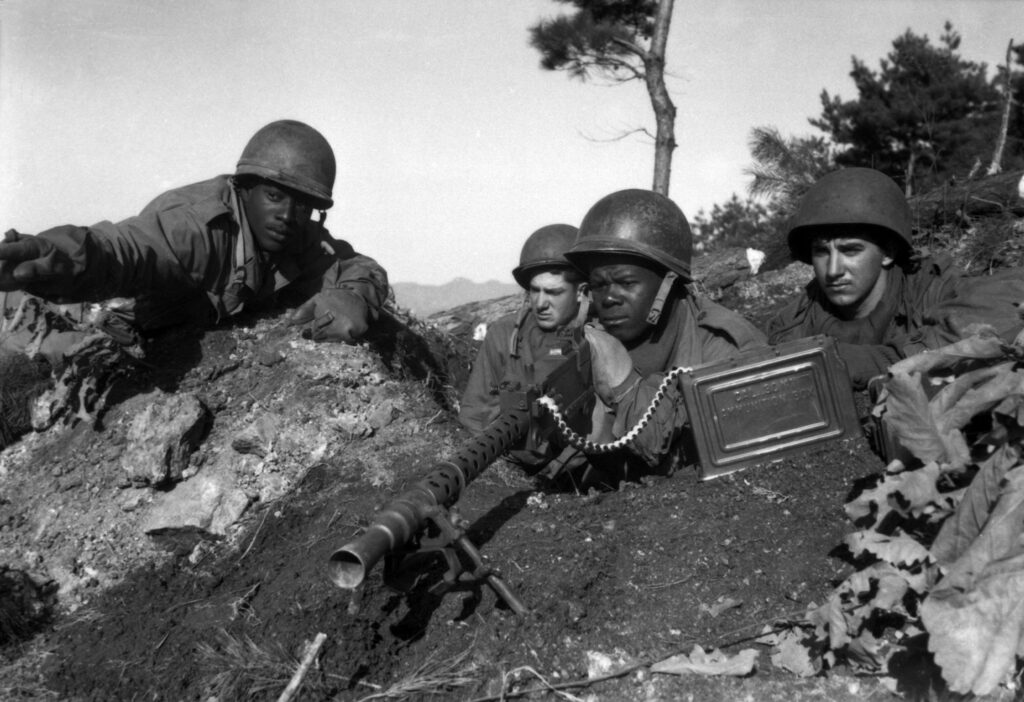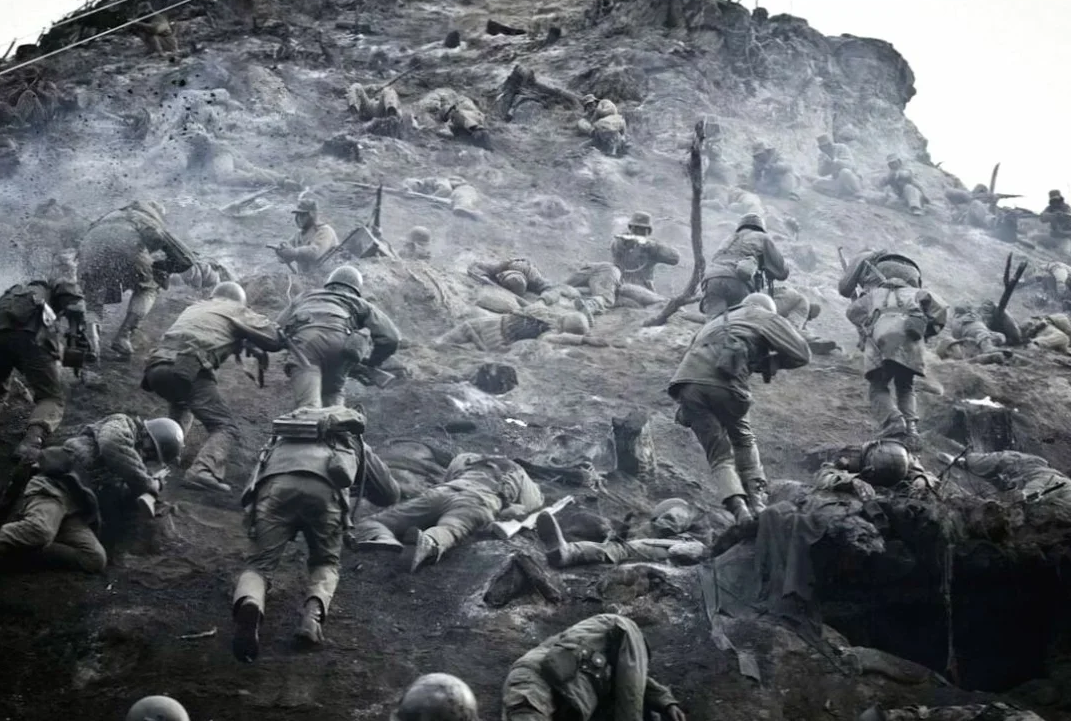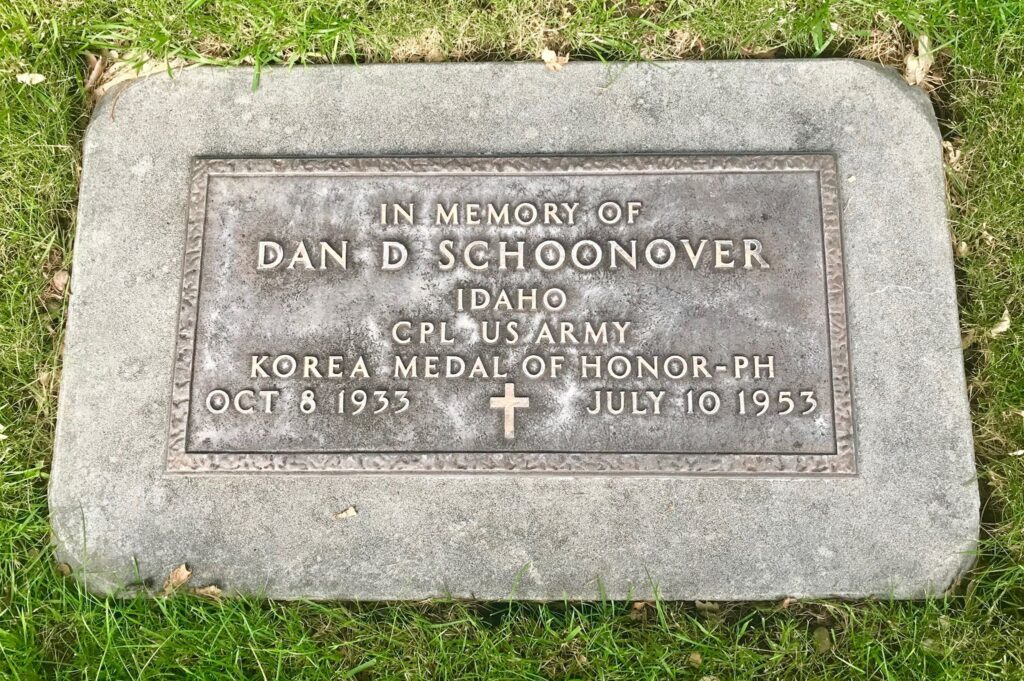Pork Chop Hill is one of the most infamous battle sites of the Korean War. A communist force met an equal number of United Nations troops twice in the spring and summer of 1953. They fought over a North Korean hill that, in retrospect, had little strategic value.
The Importance of Pork Chop Hill
Whether the hill was essential to the overall war effort or not, the American and United Nations troops who fought for the position did so with courage and valor, the way they would attack any objective. One of those soldiers, a corporal from Hawaii, was a one-man anti-communist wrecking crew.
The truth about Pork Chop Hill is that the two sides had been fighting over the North Korean hill for almost the entirety of the Korean War. After the front stabilized in the aftermath of China’s intervention in the war, UN forces took the initiative during the “stalemate” period in 1951.
After the U.S. 8th Cavalry Regiment captured the hill in October 1951, it was recaptured by the communists, only to be retaken by the UN in May 1952. Pork Chop Hill became part of the UN’s main line of resistance north of the 38th parallel and was defended by the U.S. 7th Infantry Division for much of the rest of the war.
Despite its importance, some of China’s best soldiers would attack the hill to wrestle it away from the Americans. Under Chinese Gen. Deng Hua, the communists assaulted the hill on two separate occasions in 1953, making Pork Chop Hill a valuable bargaining point in the ongoing armistice negotiations.

On April 16, 1953, the Chinese People’s Volunteer Army launched an artillery barrage that caught the UN forces by surprise as Colombian troops were taking over its defense from the Americans. The UN defenders suffered heavy losses, as did the attempted UN counterattack.
In that first battle over Pork Chop Hill, the Americans fired 40,000 artillery rounds and launched nighttime assaults during moonless nights to dislodge the communists. It was a melee of grenades, flamethrowers, and hand-to-hand combat that lasted three days. The Americans cleared the hill, but at a high cost. The second battle would be just as brutal.
By July 6, 1953, the fighting along the line of resistance entered a lull as both sides expected an armistice at any time. That night, the Chinese PVA launched an identical assault to the one launched two months prior.
Cpl. Daniel Dwain Schoonover is One of the Defenders of Pork Chop Hill
Under a thunderstorm of artillery fire from both sides, the attackers and defenders of Pork Chop Hill fought a vicious, up-close-and-personal battle for control. Among those defenders was U.S. Army Cpl. Daniel Dwain Schoonover.

Cpl. Daniel Dwain Schoonover was the leader of an engineer demolition squad attached to the 7th Infantry Division. When the division was tasked to dislodge the communists from their advancements on Pork Chop Hill, Schoonover and his engineers took up arms as a rifle company and immediately got to work.
On July 10, his squad advanced on the hill across steep terrain with little tree cover and began assaulting enemy bunkers that held up their advance. Cpl. Schoonover led his men up that hill. After an artillery round exploded over an enemy-held bunker, he jumped into the bunker, killing one defender and taking another one prisoner.
As they advanced, they came upon another entrenched position. They found themselves pinned down once more before Cpl. Daniel Dwain Schoonover ran through the blaze of bullets in no man’s land, tossed his grenades into the nearest bunker, and ran inside with just his pistol, clearing the bunker of enemy troops.
His men advanced to the top of Pork Chop Hill, only to meet the enemy’s full counterattack. Under a barrage of artillery fire, Schoonover directed his men to hold off the enemy assault while directing UN artillery on the hilltop. His direction allowed the Americans to hold the hill overnight.
When morning came, his men were relieved, but Schoonover stayed behind to man a machine gun as the enemy counterattacked once more. When it came time for the Americans to push back, Schoonover joined that assault too. The last time he was seen alive, Schoonover was single-handedly pushing back a communist assault with an automatic rifle.

No matter what the importance of Pork Chop Hill was, Cpl. Dan D. Schoonover led his men in retaking the hill and stayed at his post for two days while beating the enemy back. He didn’t live to see the recapture of the hill for UN forces or the armistice that ended the war on July 27, 1953.
Schoonover was awarded the Medal of Honor for his leadership and action under fire. He is interred at the National Memorial Cemetery of the Pacific in Hawaii.

I remember well the battles for Pork Chop hill in April, July 1953…I was on that hill and wounded (picked up some shrapnel from incoming artillery etc.) and was running around all over that hill to resupply ammo to the guys in the fighting bunkers and trying to fire my carbine to keep the Chinese attacking the hill away from me! Also, remember holing up in the command bunker while Chinese attackers assaulted the bunker lobbing grenades in and firing thru any opening they could find!!! We finally were able to fight our way out and join up with other 7th Div troops left alive on the hill to rout the attackers off for that attack; “Thank You JESUS!!! I celebrated my 21st Birthday on that Hill and a few months later another attack in July 53; I was Platoon Sgt. for the 17th Inf. Regt’s ATM (Anti-Tank-Mine Platoon-Combat Engineers) …Install AP-mines, bobby traps, service stationary flame-throwers, lay concertina barbwire around the entire hill, Rifleman & Jack of Trades 1952-53 etc., ATM Platoon supported all 17th Inf Regt. Battalions-1st, 2nd, 3rd and (Line Companies). I received my first PH-Bronz Star for activities during that attack & finally made it back out of Korea at war’s end, and on into Vietnam in the sixties; retired after serving 21yrs Army with physical disability and still “Kicking”(?) at 90rs. plus!!! 👍👍👍😁
I met Danny when he volunteered for a second tour of duty to stay in Korea to join his brother in our Able Company 13th Engineer Combat Battalion. His brother, who I knew well, was a cook in our company. I knew Danny only a short time. He was one of the nicest guys I ever knew. Everyone liked him.
A quiet soft spoken but tough brave guy.
Hello, I am doing research on Daniel D. Schoonover and I have f found a lot about his life through ancestry.com. I am working with the American Battle Monument Commission to create a webpage for Dan on the Silent Heroes website (associated with National History Day). However, I have been unable to find anything about him between 1940-1951. I learned that his parents had divorced by 1940 and that his mom remarried and moved to El Cerrito, California, but I can’t find any evidence of Dan going to high school in either California or Boise. Do you know anyone that might be related to him or have any connection with him at all? I know you didn’t really now Dan well, but it sounds like you knew his brother Jerry a bit. I would be so appreciative of any help you might give me.
Also, you are saying that Dan signed up for.a second tour of duty to be with his brother? I thought it was the other way around. Again, I would be so appreciate of your help.